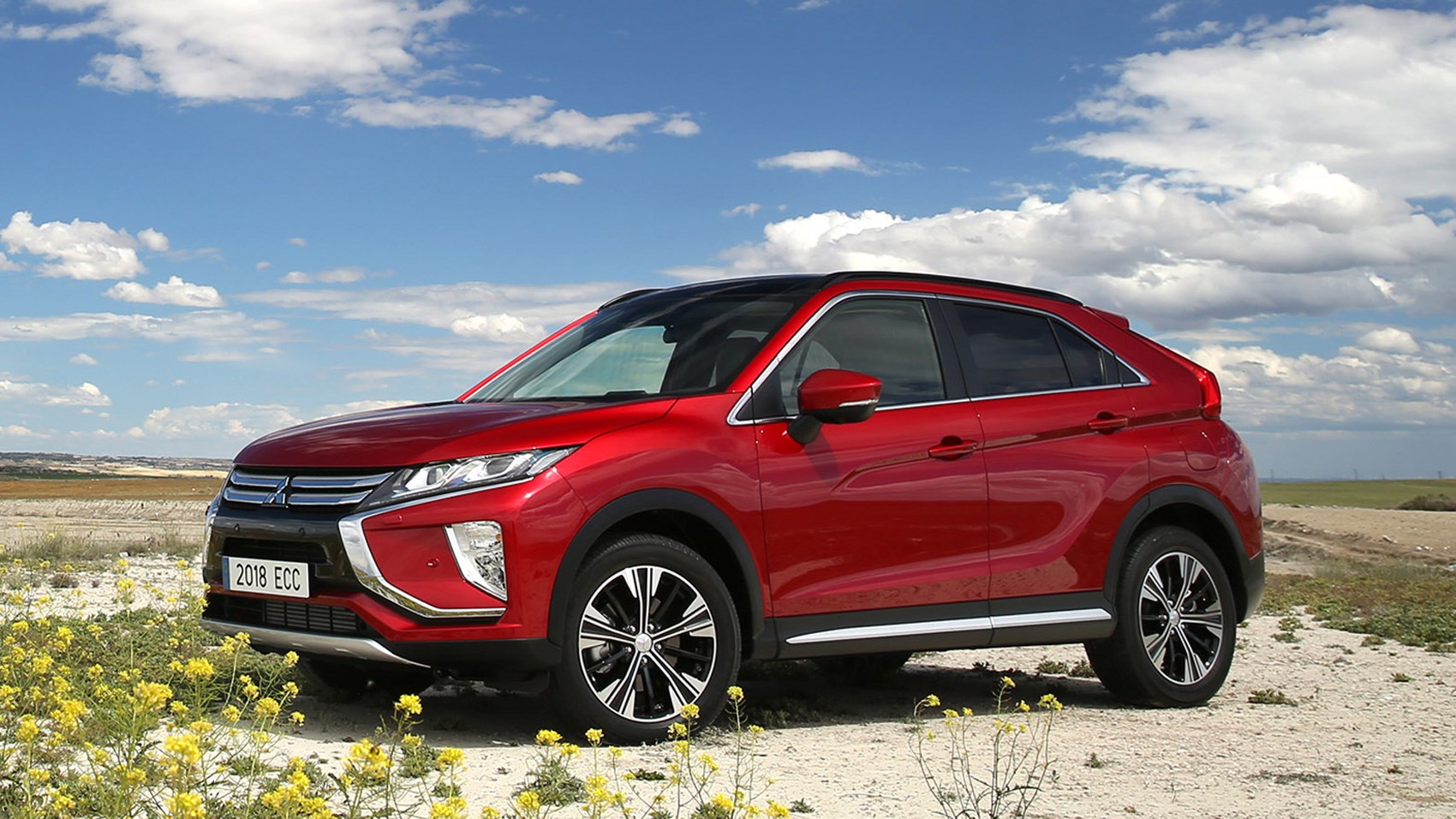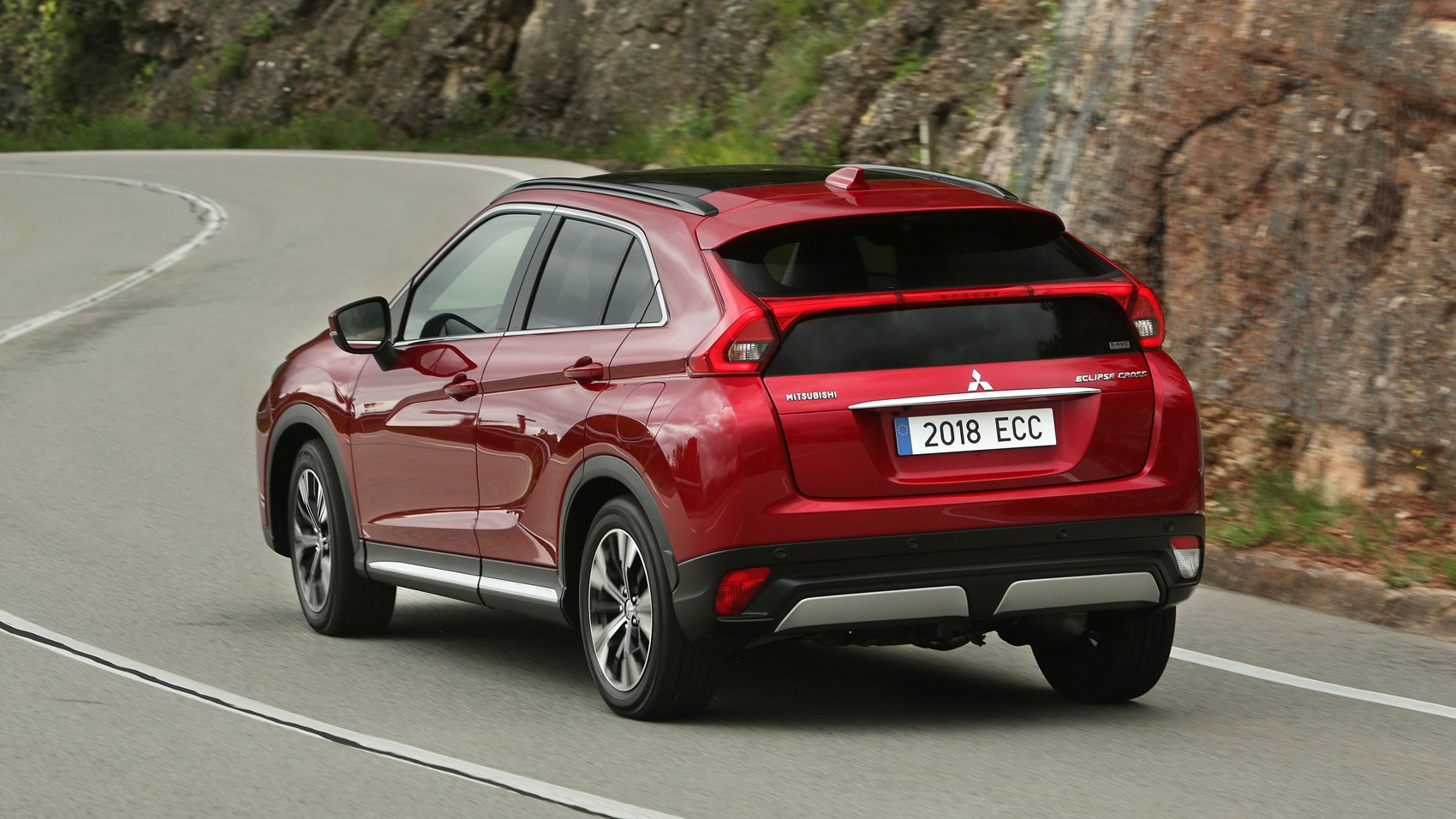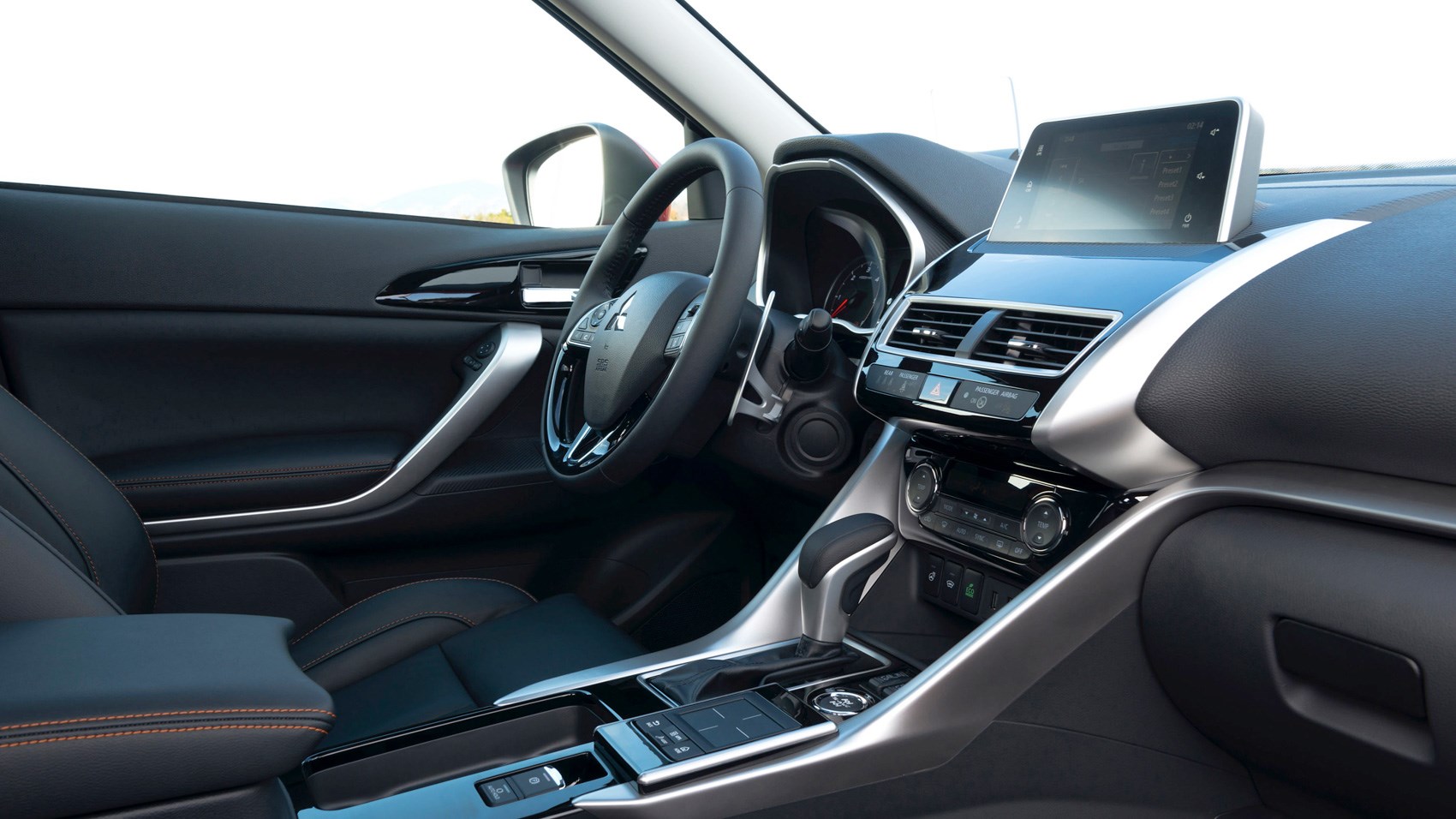► Mid-size SUV between ASX and Outlander
► Range comprises 1.5 turbo petrol or 2.2 diesel
► On sale January 2018, from around £21,000
The Eclipse Cross is Mitsubishi à la mode. Japan’s maker of rough and tough 4x4s has spotted the trail blazed by stylish crossover ‘coupes’ such as the Range Rover Evoque and Toyota C-HR, and responded with this mid-size SUV. Executives position the ‘Cross as a stepchange in exterior design and interior quality, while retaining Mitsubishi’s core tenets: variable four-wheel drive and the promise that this SUV will survive a particularly testing nuclear winter. UK orders begin around October with deliveries in January, with prices from about £21,000.
A design stepchange you say? They’ve taken that literally with the tailgate…
The front end is rugged, geometric and largely faithful to the Mitsubishi family face, but – whoa there – it’s like a whole ‘nother car from the B-posts back. The roofline goes down like a Premiership footballer, then a pronounced body slash zips back in the opposite direction: it’s all very mark of Zorro. Round the back you find a tailgate with a split glasshouse, like a Civic or Prius, which goes more in and out than the Hokey Cokey. The work of new design chief Tsunehiro Kunimoto, it’s far more distinctive than the Mitsubishi norm.

The design clothes a package that is pretty spacious, for humans at least. Rear kneeroom and headroom are fine for a six-footer, and that was with the secondary sunroof which scotches the regular car’s double bubble contoured roof. The raked roof and narrow sideglass do impinge a little on rear visibility, and may make some tall passengers claustrophobic, though the seat back can be reclined (and seat base slid forward). The boot is wide but shallow, and only swallows 341 litres of luggage – a Qashqai will stomach 430. Clamber in up front – the ride height is noticeably more commanding and SUV-like than a Seat Ateca crossover for one – and the seats are wide and squidgy. And that comfort focus doesn’t just apply to the perches…
Are you telling me it’s a bit wobbly to drive?
Let’s just say the Eclipse Cross is born to cruise, and cruise in splendid comfort. The suspension – MacPherson struts at the front, multi-link up back – is soft, allowing the Mitsubishi to glide over Barcelona’s pristine roads. At times it feels a little floaty, in 120kph motorway sweepers, and woe betide you for going into a corner too hot. The light, elasticated steering is a bit sedate on turn in, and the Eclipse Cross rolls and gets quite cross at being chucked into corners that an Ateca, lighter by at least 100kg, would despatch calmly. But get the correct entry speed (measured, slow in), and the Mitsubishi grips just fine and steering adjustments can be made with precision and power fed in. Eventually.
That’s because throttle response is not Yohan Blake-quick out of the blocks, on hand for you to tuck the nose in mid-corner, with the turbocharged 1.5-litre four-cylinder engine coupled to a Continuously Variable Transmission. So you can end up pressing the throttle too firmly, the revs flaring as a stepless CVT is wont to do. That said, the resulting bovine engine noise is pretty well suppressed.

Though the auto mode can cause the engine to spin ’til kingdom come under light load, there’s a manual override via tasteful plastic paddles, which simulates an auto’s stepped ratios. On a twisty mountainous section, you could leave the box in ‘third’ and it’ll happily cover the requisite 40-80kph (25-50mph) speed band, without impertinently changing up. Acceleration is adequate rather than andrenalising: 0-62mph takes 9.8secs. Mitsubishi acknowledges that Europeans are less receptive to CVTs, despite their compact size/weight and fuel economy benefits, but this CVT feels fine for pootling about. Combined fuel economy is 40.3mpg.
And what of Mitsubishi’s famed four-wheel drive? You can have your Eclipse Cross as a front-driver with six-speed manual, or all-wheel drive CVT (or a 2.2 diesel that arrives later). In standard auto mode, torque is split 80:20 front:rear, though up to 45% can be sent backwards in extremis. Individual wheels can be braked if slip is detected, in a bid to maintain forward momentum, and this S-AWC (Super-All Wheel Control) system has two other programmed settings, snow and gravel, with the latter sending up to 60% of torque to the rear to conquer tricky terrain. Mitsubishi has five WRC titles, and more Dakar rally wins than anyone else, don’t forget.

How does it fare on technology and safety equipment?
Pretty well. It’s too early for a Euro NCAP rating, but engineers have plumbed in autonomous emergency braking, active cruise control which brakes and accelerates the car in traffic, a warning chime if you veer out of lane and seven airbags. There’s even optional head-up display.
The Eclipse Cross lives up to Mitsubishi’s reputation for robust and sturdy cockpits, but with some welcome touches of flair. The test car featured trim inserts in gloss piano black and faux carbonfibre, plus silver-coloured accents dividing the dashboard and outlining the air vents.
A touchscreen reminiscent of a BMW’s crowns the dash, which can also be operated by a touchpad which responds pretty accurately to your finger’s movements. That said, there are plenty of chunky buttons, seemingly the size of mini-matchboxes, and big, unfussy dials.
Android Auto and Apple CarPlay are standard: Mitsubishi thinks manufacturer-supplied sat-nav is a fool’s errand, when people habitually use their smartphones to get around.
Verdict
With Mitsubishi now under the control of Renault-Nissan and beginning to slot into its platform strategy, is the Eclipse Cross the last of the old Mitsubishis or the first of the new?
In engineering terms it’s the former, but symbolically, a bit of both. The cushy ride that feels Citroën-esque, the hushed rolling refinement and the renewed interior quality and tech are all a step forward for the brand. The promise of its all-wheel drive capability and the on-road dynamics are more old-school, mind you.
Enthusiasts will probably find the drive a little frustrating, but families looking for a spacious, civilised and iconoclastic compact SUV now have a new contender to consider, from a brand with true 4×4-pedigree.